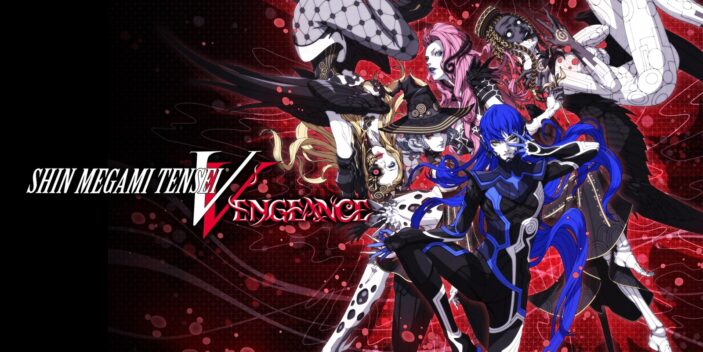
Shin Megami Tensei V might have been released back in 2021 but didn’t really catch much traction with Western audiences. It was back then, a fantastic traditional JRPG with some unique story elements, and is still considered a relatively great game. Shin Megami Tensei V: Vengeance, however, feels like the definitive release, complete with new ways to play and new mechanics to help you interact with both characters and gameplay on a deeper level.
While I do feel like the modern JRPG is shifting away from a turn-based experience like this, I do feel like there’s plenty to unpack for returning fans, who now have a whole new story to tackle, should the original feel a little too familiar.
The Path You Choose
Shin Megami Tensei V: Vengeance actually provides players with two unique storylines right out of the gate. As the story begins, you’re faced with a choice, to take or deny the hand of a mysterious girl. Denying the hand will allow you to experience the original 2021 story titled Canon of Creation, while taking the hand allows you to experience the new Canon of Vengeance storyline.
Either way, the game explicitly tells you to choose wisely, as this single choice will have a huge impact on the story that follows. While newer players might be better off with the original Canon of Creation storyline which feels a little easier to follow, returning fans will surely flock to the latter Canon of Vengeance storyline. This choice is considered an alternate path of sorts, which sees your protagonist meeting a new group of demons called the Qadištu.
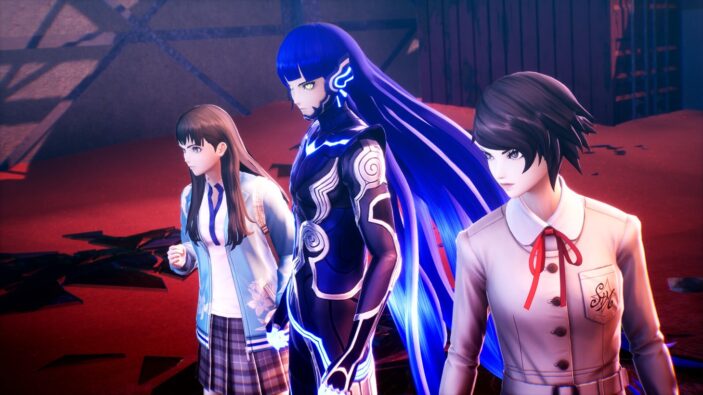
You’ll even meet a few new and exclusive supporting characters like Yoko Hiromine, and be able to experience some new questlines and bosses along the way. Thankfully, characters like Yoko actually bring significant differences to this new storyline, which adds something worth checking out for newer players who wish to experience the Canon of Creation storyline first.
It’s hard to pinpoint exactly where those differences take place without spoiling the experience, but I will say that there are indeed similar or shared areas, quests and bosses too, so nothing ever feels so different to the point where it’s a different game. For the most part, the game begins as you experience a murder on the way home from school, and your journey soon devolves into what can only be described as a spiritual journey through an apocalyptic version of Tokyo. You soon fuse with a mystical god-like character referred to as Nahobino, and fight your way to essentially become a new God and set things right, as they once were.
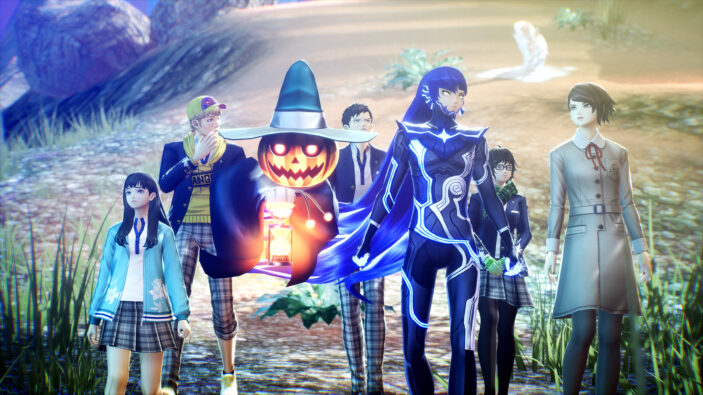
While it can be a little hard to follow at times and certainly long-winded, there are some cool and emotional moments that build your protagonist and supporting characters up quite well. It is generally interwoven with some stylish cinematic sequences and some admittedly excessive in-game conversations that drag on at the best of times. While there’s plenty to do, Shin Megami Tensei V: Vengeance serves up a few neat twists, even if these deviate more significantly towards the end of the game.
Demon Slaying
As far as gameplay goes, Shin Megami Tensei V: Vengeance keeps its core intact. It’s as traditional as a JRPG gets in the combat department, as turn-based combat allows you to take a party of up to four demons or human allies into battle. They each have their own attacks and special abilities, which makes combat a joy in terms of overall variety, but I would be lying if the combat itself took a few hours to become as interesting as it implies.
Like many JRPGs, Shin Megami Tensei V: Vengeance takes its time in building its systems and introducing you to its mechanics, so it rarely feels difficult in the opening hours. Each character in your party begins with four icons on the top right of the screen, which indicates how many actions they can undertake in one turn. Targeting a weakness or attacking with critical hits can even make these icons glow instead of taking them away, essentially giving you extra actions within your turn.
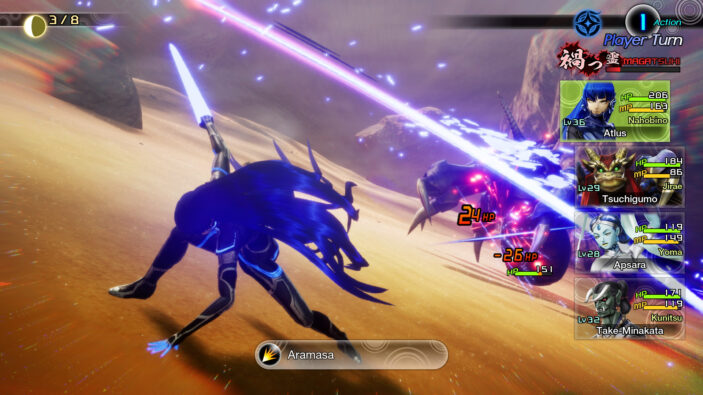
You can even utilise a certain ability which allows you to talk to opposing enemies and demons to coax them over to your side to fight for you in battle. Characters can now also take advantage of passive abilities, which can increase attack accuracy or evasion or temporarily boost stats for their next turn. Completing certain quests along the way will also unlock various Magatsuhi abilities, which act as devastating finishing moves. They do require certain conditions in able to be used, like having a certain ally in your party, but they’re well worth it, especially when some of the bosses towards the end of the game put up a real fight.
While an ally can level up their stats and learn new abilities via combat, you can also customise them with Essences, which are gained when demons unlock new skills. These help by adding levels of resistance to certain enemy attacks and abilities. You can also explore the world to earn Glory, a type of XP/currency that can be used to further customise and upgrade your allies with things like extra action slots. The amount of customisation here is truly impressive, and the real core of the combat and its mechanics begin to shine as you refine your team and character builds.
Mix It Up
There are a few new features outside of combat that set Shin Megami Tensei V: Vengeance apart from the original. Firstly, the Demon Haunt feature basically allows you to interact and chat with your demons at leylines, which are basically blue pillars of light emitting from the Earth. Here, you can give them gifts and further understand their characters and personalities, which helps flesh them out and make things feel more personal while helping them level up faster. You can also save the game at any time now, instead of having to find these leylines to save your progress.
While this initially works a treat, your demons will soon want to chat with you quite regularly, making these events seem a little more long-winded than they need to be, especially once you’ve done it so many times.
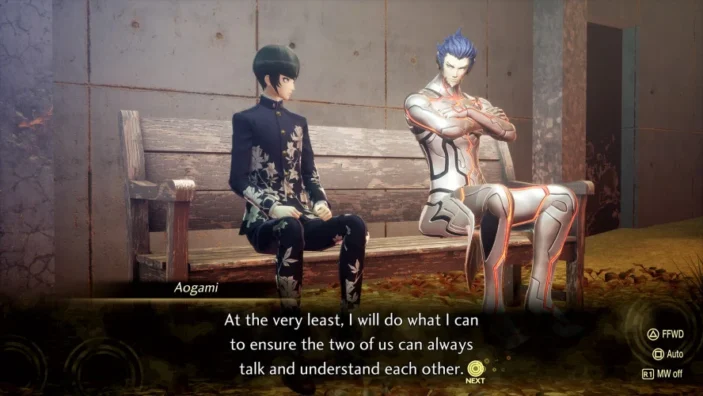
There are also new quests to undertake, including new areas of the map to explore and new bosses to fight. There’s even a sky-view mode which lets you see locations from a bird’s eye perspective, and a boss-rush mode that lets you sharpen your skills with a gauntlet of boss fights. The Canon of Vengeance storyline also includes a new zone to explore and one new dungeon to fight through, for added variety.
Look the Part
Overall, Shin Megami Tensei V: Vengeance looks great and runs even better. While I would recommend playing this on something like the PlayStation 5 or PC as opposed to something like the Nintendo Switch for smoother frame rates and sharper resolutions, it’s nice to know that the older hardware still runs this as well. That being said, I had practically no issues on the PS5, as this maintained 60 FPS in 4K.
Final Thoughts
It might feel like a little much for newer fans, but Shin Megami Tensei V: Vengeance is certainly the best way to experience this game. The original Canon of Creation story features here, but the added Canon of Vengeance story simply adds another thick layer of content to what is already an enormous game. With new zones to explore, characters to meet and bosses to fight, there’s really no shortage of content, even for returning fans.
Combat excels in its versatility and variety through character customisation and progression, even if it takes a few hours to get going. If you’re down for a solid JRPG every now and then, there’s simply no reason why you should pass up Shin Megami Tensei V: Vengeance.
FOUR STARS (OUT OF FIVE)
Highlights: New story adds a wealth of content; Combat is deep and satisfying; Runs incredibly well
Lowlights: Long-winded story; Original Canon of Creation story remains untouched
Developer: Atlus, Atlus West
Publisher: Atlus
Platforms: PlayStation 5, PlayStation 4, Xbox Series X/S, Xbox One, Nintendo Switch, Windows PC
Available: Now
Review conducted on PlayStation 5 with a code provided by the publisher.
